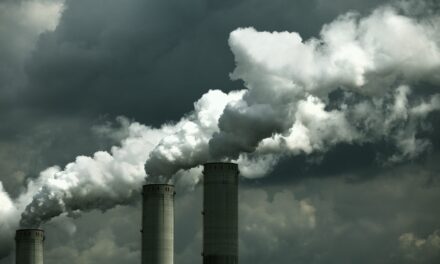Promoted from the diaries by Steven D. Thanks Captain. I was going to write on this topic, but you more than cover why these stories are critically important — stories about a global warming tipping point and the Bush administration’s campaign to suppress “bad news” from NASA’s chief climate scientist — you nail them.
In the midst of Mideast uncertainty and violence, with Democrats feverishly involved in a possible Senate fillibuster attempt on a Supreme Court nominee, and on the weekend before a limping and defiant president’s State of the Union address, the lead story in the Sunday editions of two of the nation’s top newspapers–the New York Times and the Washington Post–is about the climate crisis.
In a sense, this fact is even more significant than the stories themselves. Could it be that the Climate Crisis is finally going to start getting the attention the possible end of the world as we know it deserves?
What these lead stories say after the fold.
The New York Times leads with a story highlighting the charges by NASA scientist Dr. James E. Hansen, one of the most respected experts on climate change for more than a generation, that the Bush administration is taking exceptional measures to silence him on the subject.
Dr. Hansen said that nothing in 30 years equaled the push made since early December to keep him from publicly discussing what he says are clear-cut dangers from further delay in curbing carbon dioxide. In several interviews with The New York Times in recent days, Dr. Hansen said it would be irresponsible not to speak out, particularly because NASA’s mission statement includes the phrase “to understand and protect our home planet.”
The Washinton Post leads with a warning from climate scientists that the earth is heading for a tipping point, beyond which lies global disaster and climate change beyond anything humankind has experienced before.
There are three specific events that these scientists describe as especially worrisome and potentially imminent, although the time frames are a matter of dispute: widespread coral bleaching that could damage the world’s fisheries within three decades; dramatic sea level rise by the end of the century that would take tens of thousands of years to reverse; and, within 200 years, a shutdown of the ocean current that moderates temperatures in northern Europe.
Though there is little that is specifically new in the Post story (and it also contains Hansen’s charges), it is the more significant of the two, because it spells out what it is at stake, and what in general must be done. It gives voice to the two attitudes in play, that of the Bushites, in the words of their science mouthpiece who says:
“There’s no agreement on what it is that constitutes a dangerous climate change,” said Marburger, adding that the U.S. government spends $2 billion a year on researching this and other climate change questions. “We know things like this are possible, but we don’t have enough information to quantify the level of risk.”
And the common sense/enlightened government/scientific view, expressed by David Warrilow, who heads science policy on climate change for Britain’s Department of Environment, Food and Rural Affairs:
“… at the moment we’re accelerating toward the tipping point,” Warrilow said in an interview. “This is silly. We should be doing the opposite, slowing down whilst we build up our knowledge base.”
The Times story, on the other hand, is primarily a story about the continuing efforts of the Bushites to stifle science and control unfavorable information, which has been clear since this administration’s first year. It gets the anti-Bush dander up, but may obscure Hansen’s message.
Yet for that very reason, it may be the more effective story. By showing how Hansen is being muzzled, perhaps readers will want to know what he’s saying that is upsetting the Bushites. Apparently one thing is that it’s getting hot around here.
In mid-December Hansen announced data showing that 2005 was probably the warmest year in at least a century. After that, “officials at the headquarters of the space agency repeatedly phoned public affairs officers, who relayed the warning to Dr. Hansen that there would be ‘dire consequences’ if such statements continued, those officers and Dr. Hansen said in interviews.”
But what may have upset Bushites even more was Hansen’s lecture to the annual meeting of the American Geophysical Union in San Francisco. In the talk, he said that:
significant emission cuts could be achieved with existing technologies, particularly in the case of motor vehicles, and that without leadership by the United States, climate change would eventually leave the earth “a different planet.”
This is Hansen’s most potent message: coupling the dire consequences with the phrase that scares the Bushites and their selected corporate sponsors the most: “significant emission cuts could be achieved with existing technologies…” and saving the planet cannot happen “without leadership by the United States.”
That two of America’s most influential newspapers choose to lead with a climate crisis story might mean that another “tipping point” has been reached: when news media begin to finally treat this story with the relentless serious coverage it deserves.
But at the State of the Union we expect The Big Smirk to stick to the terrorist under the mattress theme. As far as the climate crisis is concerned, he’s happy to whistle a different tune: “It’s the end of the world as we know it, but I feel fine.”




